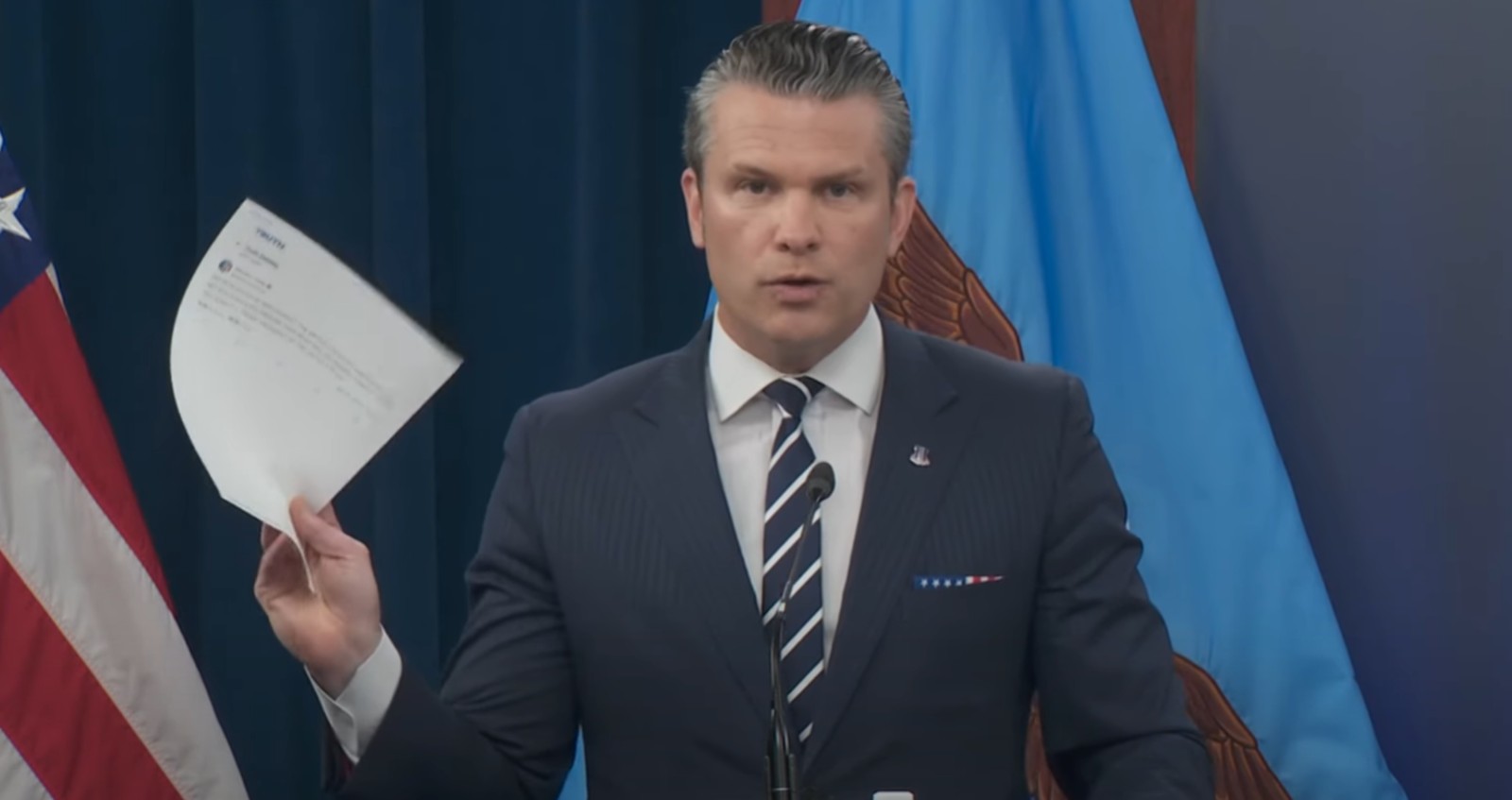In a high-stakes press conference at the Pentagon, Defense Secretary Pete Hegseth and Chairman of the Joint Chiefs of Staff, Air Force General Dan Caine, addressed the media following a major military operation that targeted Iran’s nuclear facilities. The briefing came amid heightened tensions and speculation over the scale and success of the United States’ response to a perceived Iranian threat.
Without revealing too much upfront, the event was one that commanded immediate global attention, setting the tone for what could become a defining moment in modern U.S. military history.
Early Warning and Strategic Evacuation
General Dan Caine opened the briefing by revealing that U.S. intelligence had picked up “indications and warnings” suggesting Iran intended to launch an attack against American bases in the region. These signals came early on Monday morning, prompting a rapid response.
“We evacuated the majority of our personnel from at-risk sites in accordance with contingency protocols,” Caine explained, underscoring the military’s ability to respond swiftly to actionable intelligence. He emphasized the readiness of U.S. forces and praised the coordination between agencies.
Hegseth Takes Aim at Media Narratives
When Hegseth took the podium, his remarks were as much a rebuke of media coverage as they were a military update. He criticized what he referred to as the “fawning coverage” by outlets like CNN, MSNBC, and The New York Times regarding an early Defense Intelligence Agency (DIA) assessment of the strike’s impact.
Hegseth read directly from the preliminary DIA report, noting that it clearly stated its conclusions were based on low-confidence intelligence and required weeks to complete a more definitive analysis. He emphasized that the report was not coordinated with the broader intelligence community and was built on multiple linchpin assumptions.
“If your linchpin is wrong, everything else is wrong,” he said pointedly, suggesting that the leak of the assessment was politically motivated and intended to diminish the perceived success of the U.S. strike.
Multiple Assessments Confirm Severe Damage
Turning to alternative sources of analysis, Hegseth cited multiple international and domestic agencies who have reviewed the aftermath of the U.S. strikes on Iranian nuclear facilities:
- Israeli Atomic Energy Commission: Confirmed that critical infrastructure at the Fordow nuclear site was destroyed, rendering the facility inoperable.
- United Nations Atomic Energy Agency: Director General Rafael Grossi reportedly stated that the U.S. strikes caused “enormous damage” to Iran’s nuclear sites.
- IDF Chief of Staff: Asserted that the operation set Iran’s nuclear ambitions back by years.
- Iranian Foreign Minister: Publicly acknowledged significant damage, calling the aftermath an understatement.
- Former CIA Director John Ratcliffe: Claimed the agency had a body of “credible intelligence” confirming the destruction of several key nuclear facilities.
Hegseth emphasized that these assessments contrasted sharply with the “low-confidence” claims circulating in media reports based on the early DIA memo.
Intelligence Reinforcement and Long-Term Impact
According to Hegseth, the CIA continues to collect reliable intelligence confirming the strike’s success. He quoted a statement from Ratcliffe noting that new, highly credible sources indicate the damage is not only severe but will take years for Iran to recover from.
“Several key Iranian facilities were destroyed and would have to be rebuilt over the course of years,” he said, reinforcing the view that the strike was a major setback for Iran’s nuclear ambitions.
He also referenced comments from Tulsi Gabbard, the Director of National Intelligence (DNI), affirming the president’s public statement that Iran’s nuclear infrastructure had been effectively neutralized.
Additionally, David Albright, President of the Institute for Science and International Security, reportedly stated that the joint U.S.-Israel operation had devastated Iran’s centrifuge enrichment program.
Accusations of Media Bias
Perhaps the most emotional part of the press conference came when Hegseth addressed the press directly. He accused major media outlets of downplaying the operation’s success out of political bias against former President Trump.
“Because you cheer against Trump so hard, like it’s in your DNA, you want him to fail so badly, you have to choose to cheer against the efficacy of the strikes,” Hegseth declared.
He accused the press corps of being more interested in undermining the administration than reporting on a historic and, in his words, “highly effective” military operation.
The Road Ahead
General Caine was expected to follow up with detailed operational data and a timeline of events leading to the strike, though this part of the briefing was not publicly released at the time of this report. Analysts anticipate that the Pentagon will soon release satellite imagery and further evidence of the strike’s damage to reinforce its claims.
As the U.S. continues to monitor developments in Iran, questions remain about how Tehran will respond to the blow to its nuclear program. The Pentagon and intelligence community are said to be on high alert, ready for potential retaliatory measures.
A Defining Moment?
This operation, now being described as one of the most consequential U.S. military actions in recent years, may well define the next phase of U.S.-Iran relations. With multiple intelligence sources corroborating the effectiveness of the strike, the narrative of success is growing stronger.
Hegseth’s forceful press conference, combined with international acknowledgments of the damage inflicted, suggests that the administration is preparing to capitalize on what it sees as a strategic and symbolic victory.
The coming weeks will determine whether this strike marks a temporary setback for Iran or a turning point in the region’s balance of power. One thing is clear: the world is watching closely.

